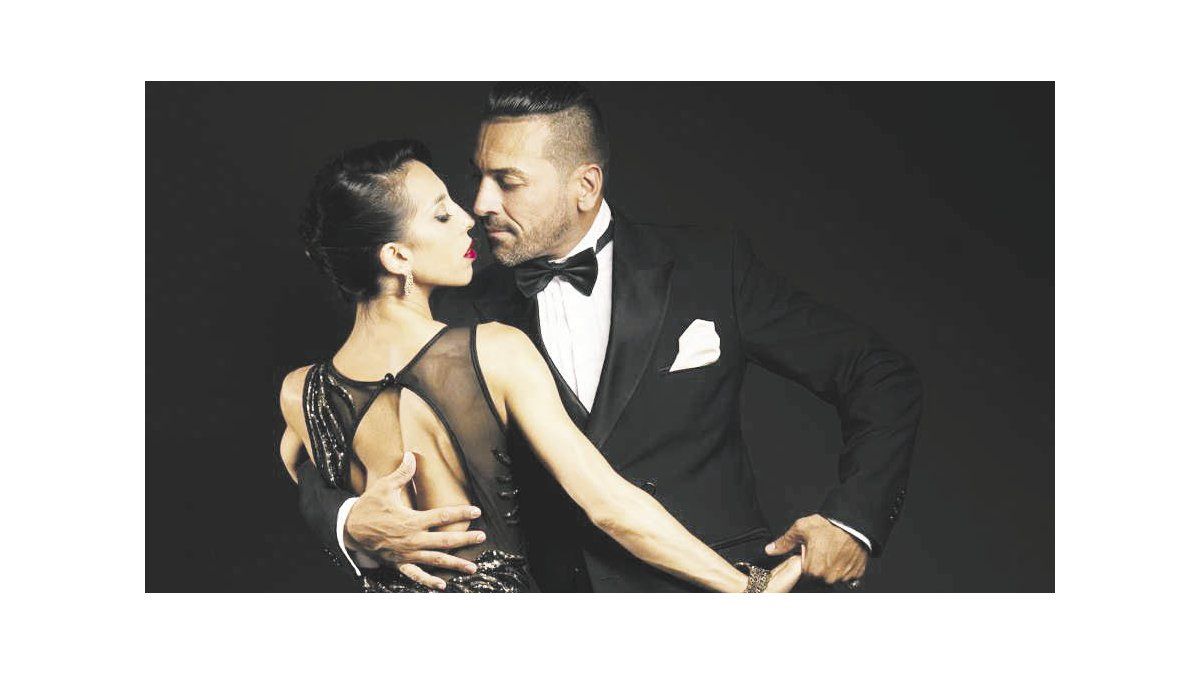Ricardo Astrada: Early, no doubt. I’m going to be 43 and I’ve been at this for 30 years. Now I’m putting on my show at the Faena hotel, but I needed something more… That’s how I proposed to Constanza that we perform at the World Cup; she obviously she told me yes. We wanted to win, of course, but we did it with the idea of having fun, having a good time: there were never any nerves, we enjoyed ourselves from the beginning to the end with the whole group of people who accompanied us in this task. We do not neglect anything: dance style, choreographic intervention, everything. Well, well, the first stage we went ahead, first, with a very good score, and then to eighth, and then the semifinal. We never doubt our professional, stage capacity.
Q.: How long have you been with Constanza Vieyto as a professional partner?
AR: We work separately a lot, but as a couple only a year and a half. That is, a year and a half before the pandemic, not counting that time. There was courage on our part to go out and compete and we knew that we were doing it against very talented people, young guys, some colleagues and friends, participants from all over the world, from Russia, France, Colombia, from the United States. Also from other provinces of our country. The bar was high. I think that beyond quality, we also won with a different proposal. Just as the majority leaned toward that drama so typical of tango, we opted for joy, for the happiness of dancing, of living. It was thus that many people felt identified with what we proposed. We did one more tango from the 90s, we didn’t lift our feet so much or so much twirl. It seems to me that this was the winning strategy, quite contrary to that of the others.
Q.: And they chose the tango “Mala junta”.
AR: That’s right, it’s our arrangement that we do with the Rojo Tango orchestra at Faena. And this choice also contributed to the World Cup. He really liked it. In a word, we try to be as original as possible.
Q.: Is the difference between track and stage tango very wide?
AR: Yes, of course. On the dance floor, the couple dances more closely, not lifting their feet off the floor as much, with other figures, on the other hand, the one on stage is more fantasy, it gives more room for creativity. There are tricks, more lifts, other kinds of figures, sitting, hanging, swinging legs. It also allows mixing with other things, some use ballroom, jazz, classical. But in our case, and with all due respect to the competitors, tango won here. We imposed that. The pure tango.
Q.: How did you get involved with dancing tango from such a young age?
AR: Actually I started with folklore and little by little I got to tango. At the age of 13 I was already in the Academy, I was lucky enough to win the Buenos Aires youth tournaments twice, later I appeared in the Argentine Dance Championship, which I also won. And finally in 2001 I arrived in Cosquín, at Plaza Próspero Molina, where I won in the Revelation category in tango. Julio Márbiz was still as driver. He was very generous with me, he mentioned me a lot and it boosted my career.
Q.: What were your references, your models among tango dancers?
AR: Many… Roberto Herrera, dancer, who formed a couple on stage with Vanina Bilous. El Chúcaro of course, great inspiration for me. Miguel Angel Zotto. Jorge Torres, whose partner was Karina Piazza… We have a tradition of great dancers. And inspiring.
Q.: And in music?
AR: Francisco Canaro is one of the ones I like the most if we talk about traditional tango, and if we go to modern tango, obviously I go crazy with Piazzolla. Piazzolla added rock ‘n roll to our tango. I sometimes drive through Buenos Aires listening to Piazzolla, and it’s as if the city’s own music were playing. Like the soundtrack to it.
Q.: What differences are there between the Argentine and foreign public as spectators of tango?
AR: Not everyone understands it in the same way, just as people’s sensitivity is not the same. Usually the foreigner sees tango and goes crazy. I’m in daily contact with them, and there isn’t a day when they don’t want to touch your hand, take a picture, shout… The most expressive are the Mexicans, the Colombians. The most respectful, who only applaud at the end, are the Japanese and the Chinese. The North American is quite particular: there are some who shout like crazy and others who remain silent. The good thing about tango is the form, the passion, the movements, it reaches the whole world, ours and those from abroad.
Q.: Subtitles are not needed.
AR: Exactly, it transcends languages. The World Cup greatly expanded the bond, there are many who write to me privately, thank me, tell me about their identification, the emotion they felt, what they cried. It’s amazing, right? That is going through the screen because they were watching me on television and now they wrote to me to tell me all that.
Q.: What other type of music do you like beyond tango?
AR: I really like modern and traditional Italian music, I also listen to flamenco. National music too, but since I’m from the north I prefer the quartet, the Santa Fe cumbia, the good cumbia, and of course folklore.
Q.: What other projects do you have after the World Cup?
AR: Now we are with a show, “Sentí tango”, with maestro Fernando Marzán, one of today’s great tango pianists, who comes from a tango family. I also put together a trailer, about two weeks ago, called R. Astrada, and that we are 20 people on stage, with traditional tangos, with my way of seeing tango and how it should be seen on stage. And of course, with the World Cup, proposals have begun to arrive that we are beginning to see little by little with Constanza.
Source: Ambito
David William is a talented author who has made a name for himself in the world of writing. He is a professional author who writes on a wide range of topics, from general interest to opinion news. David is currently working as a writer at 24 hours worlds where he brings his unique perspective and in-depth research to his articles, making them both informative and engaging.




